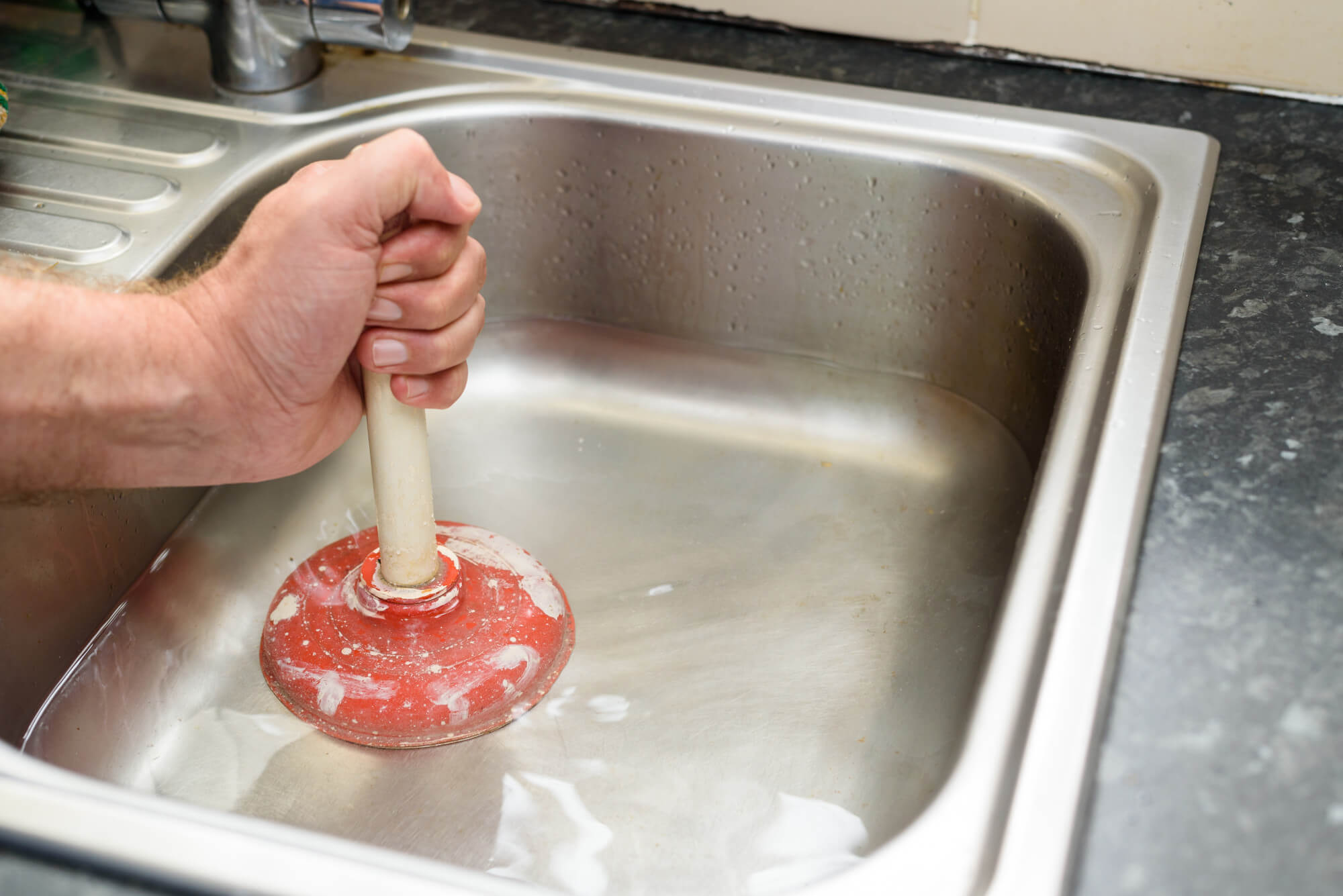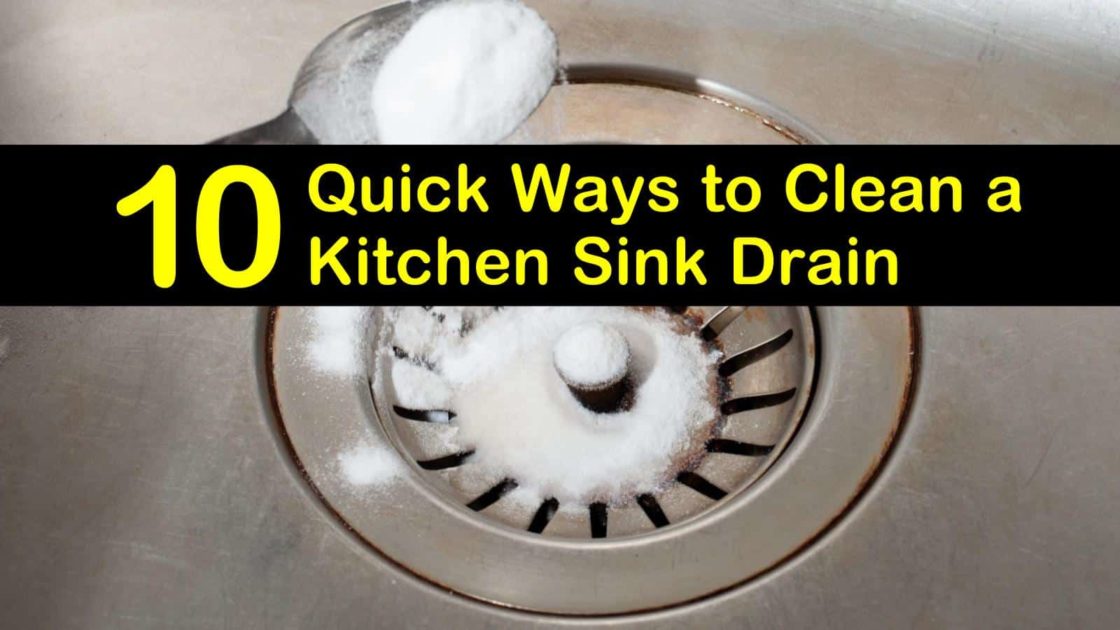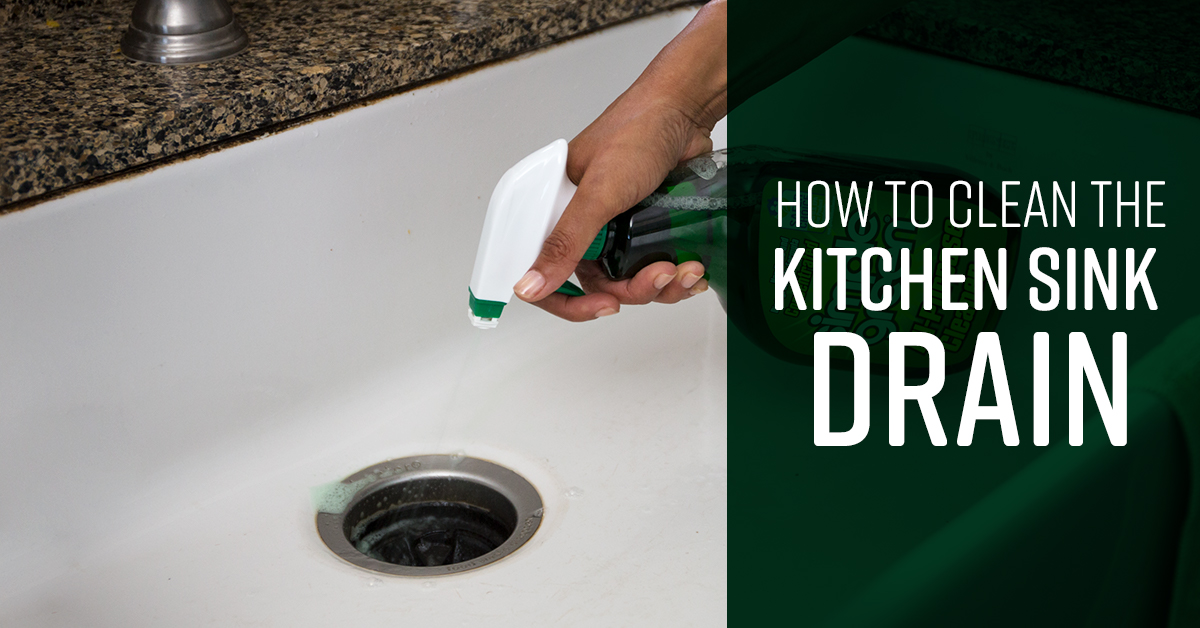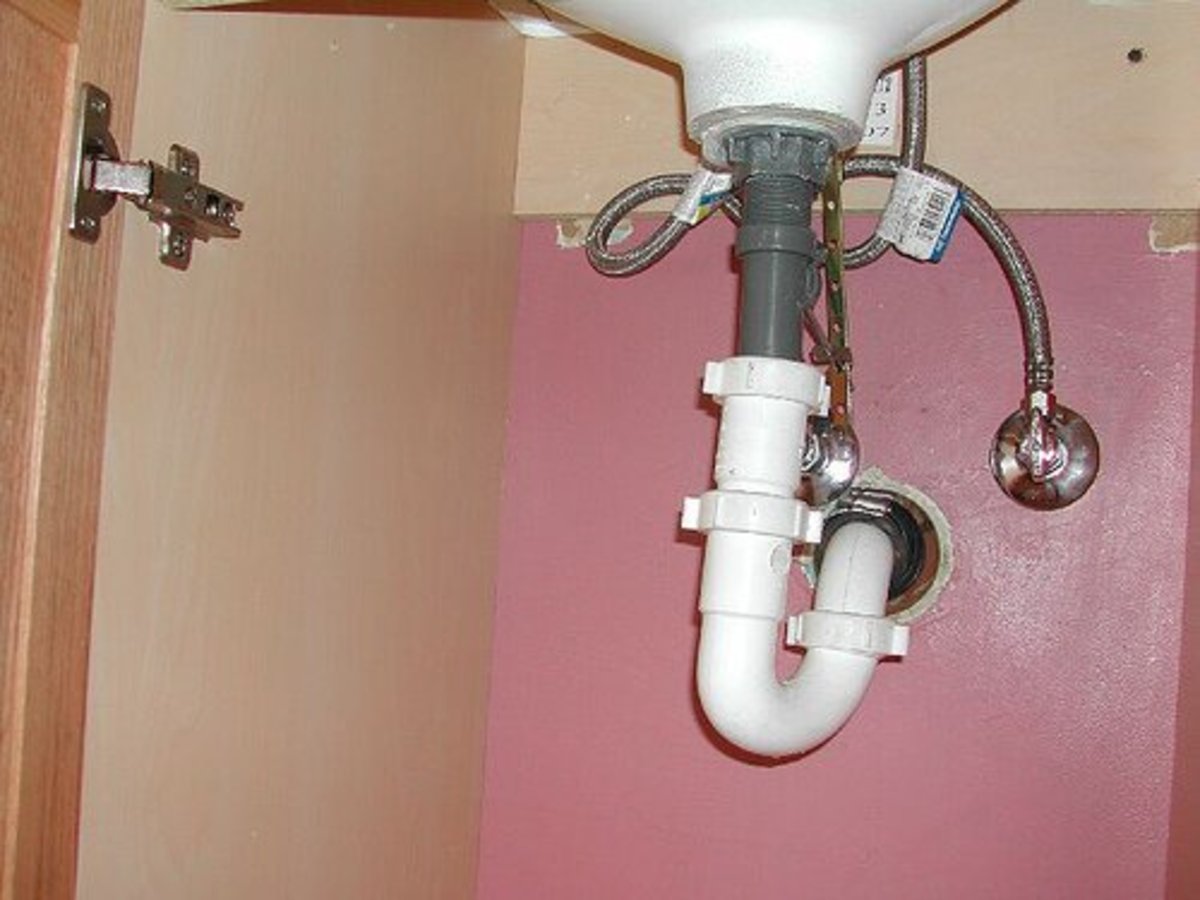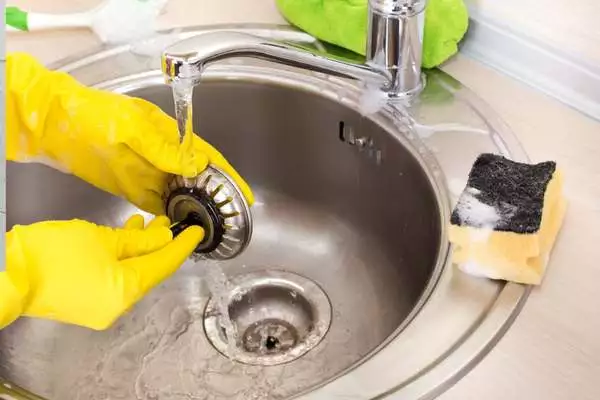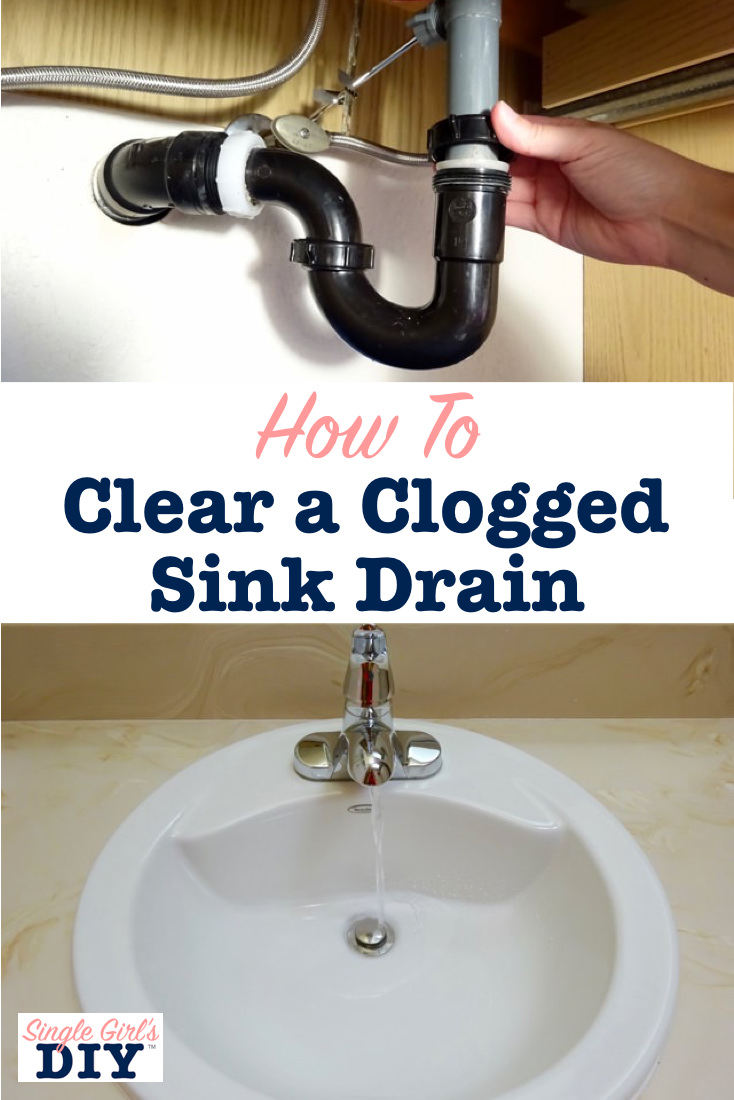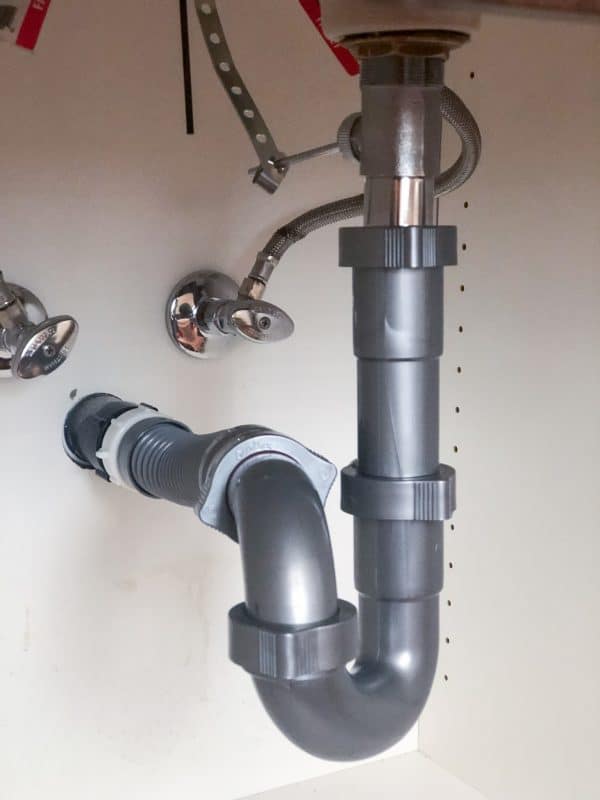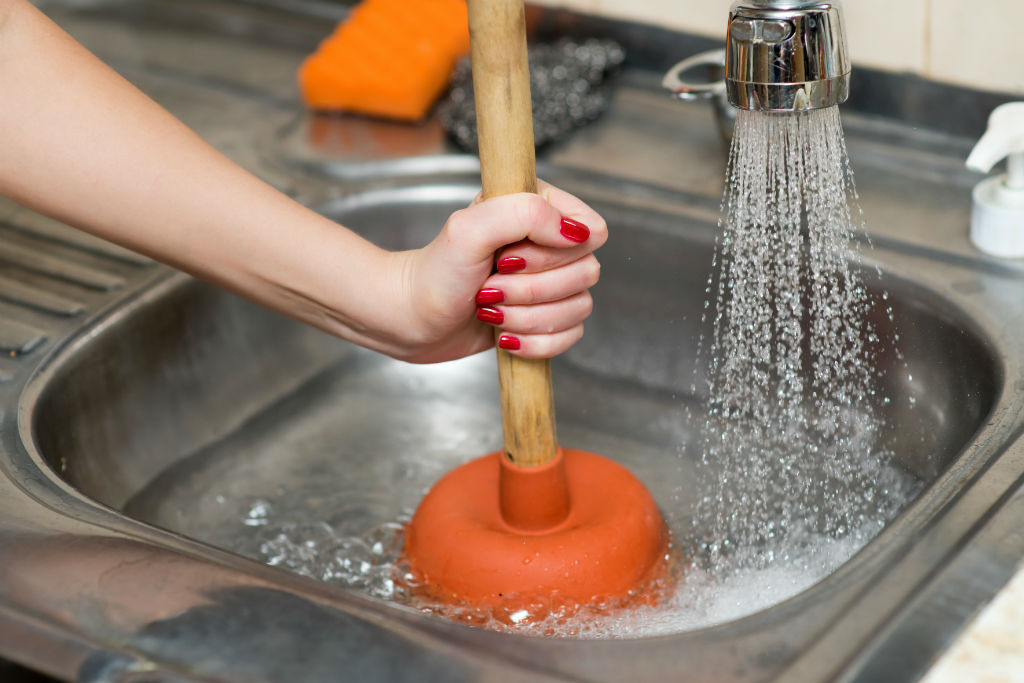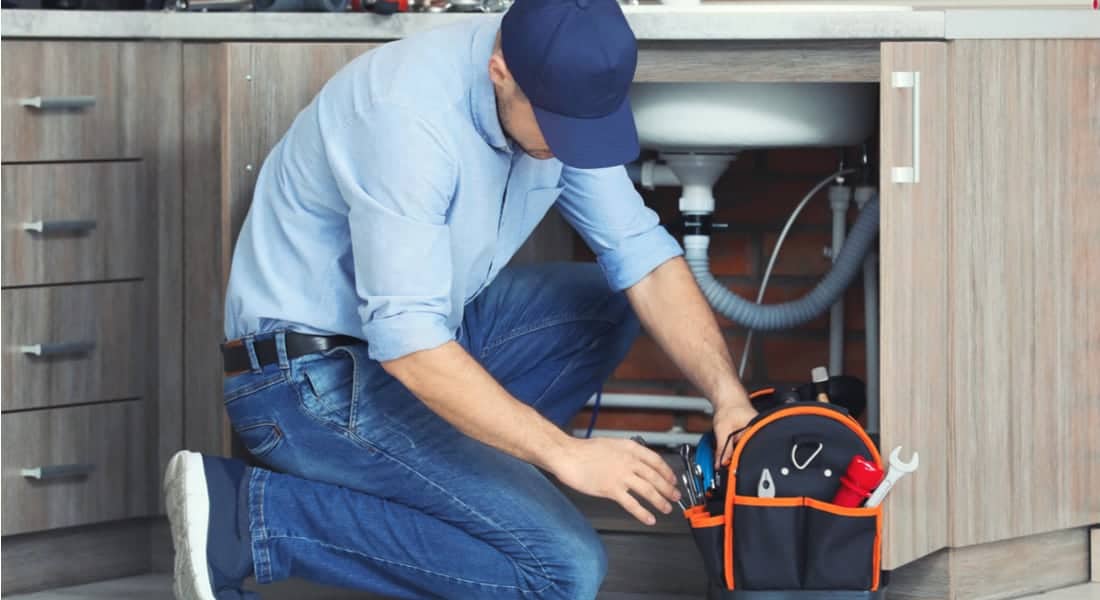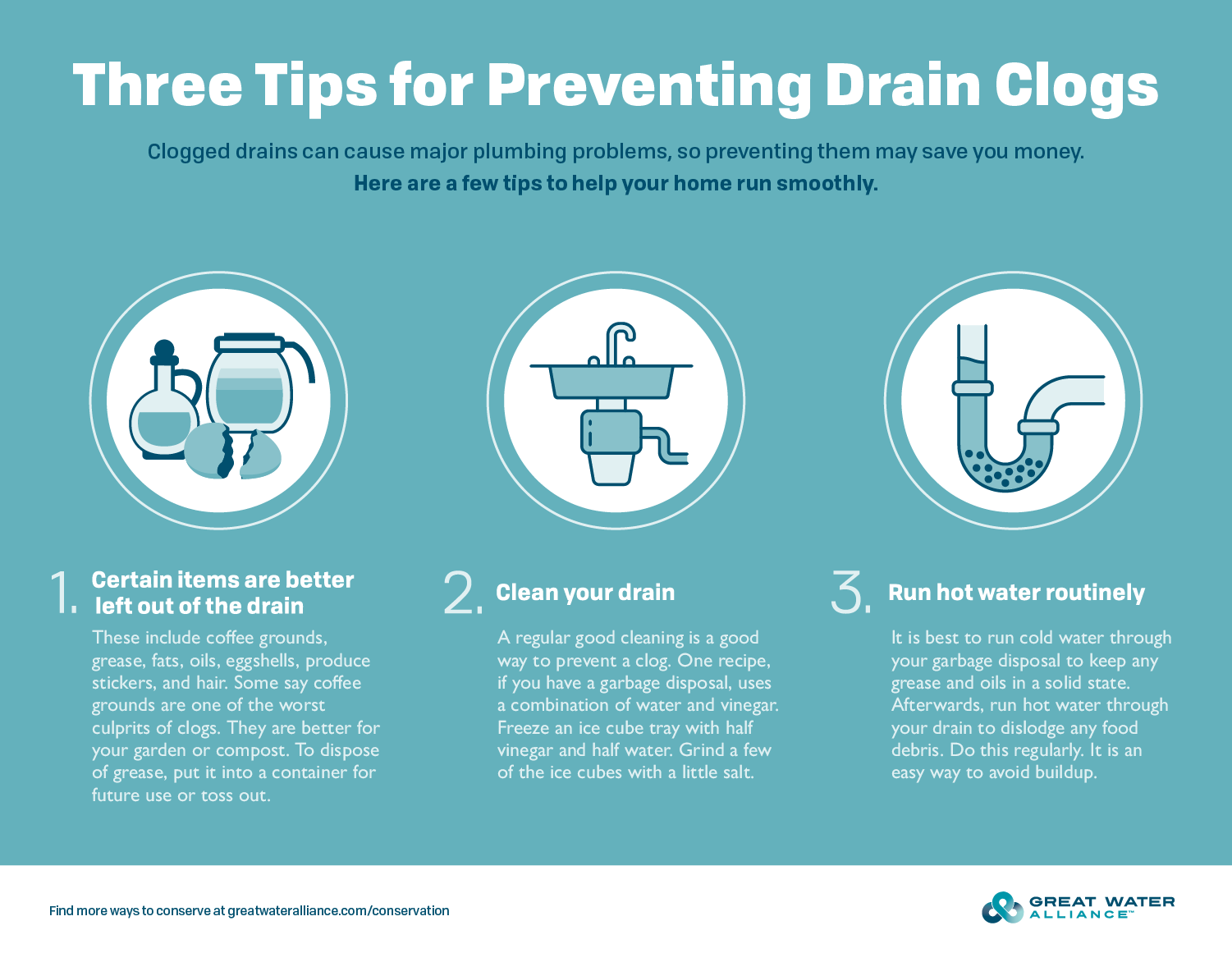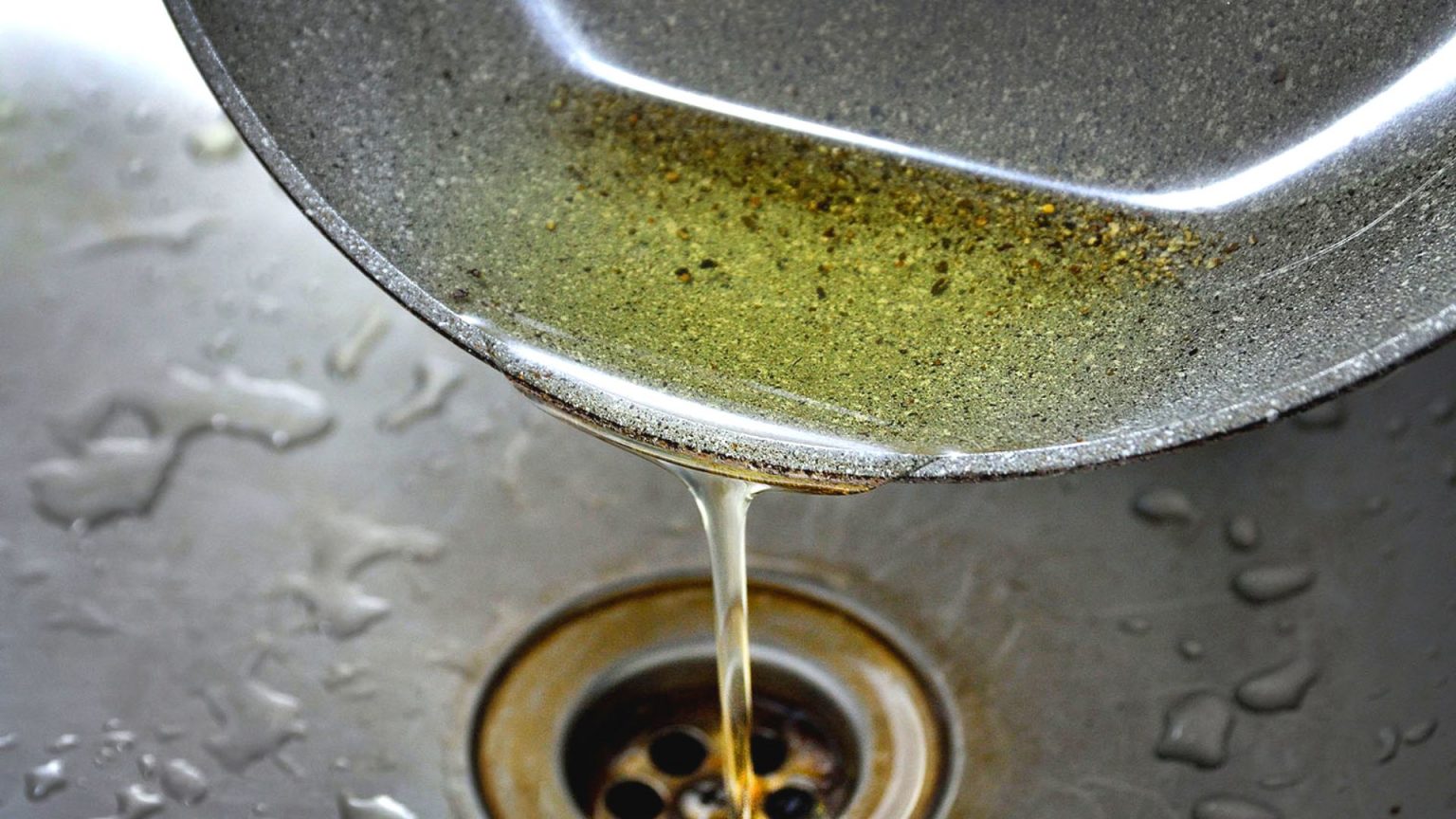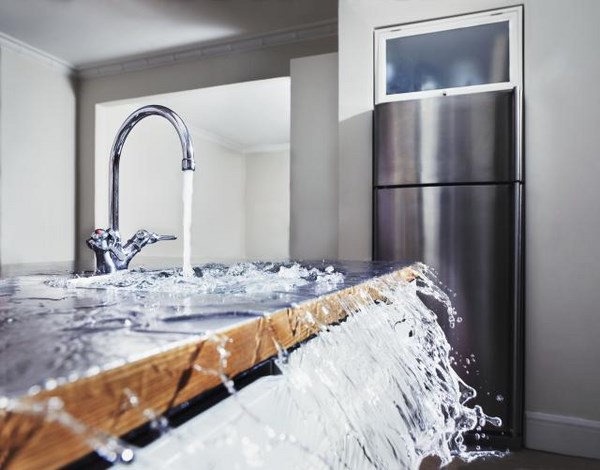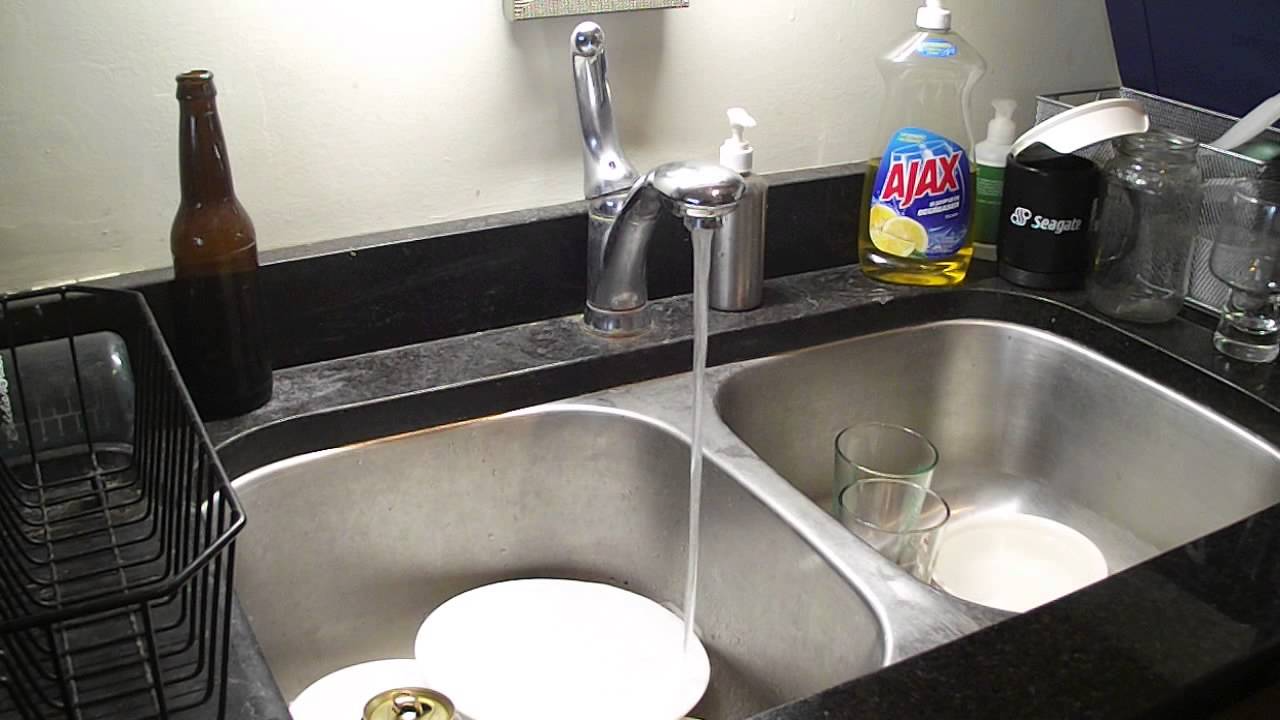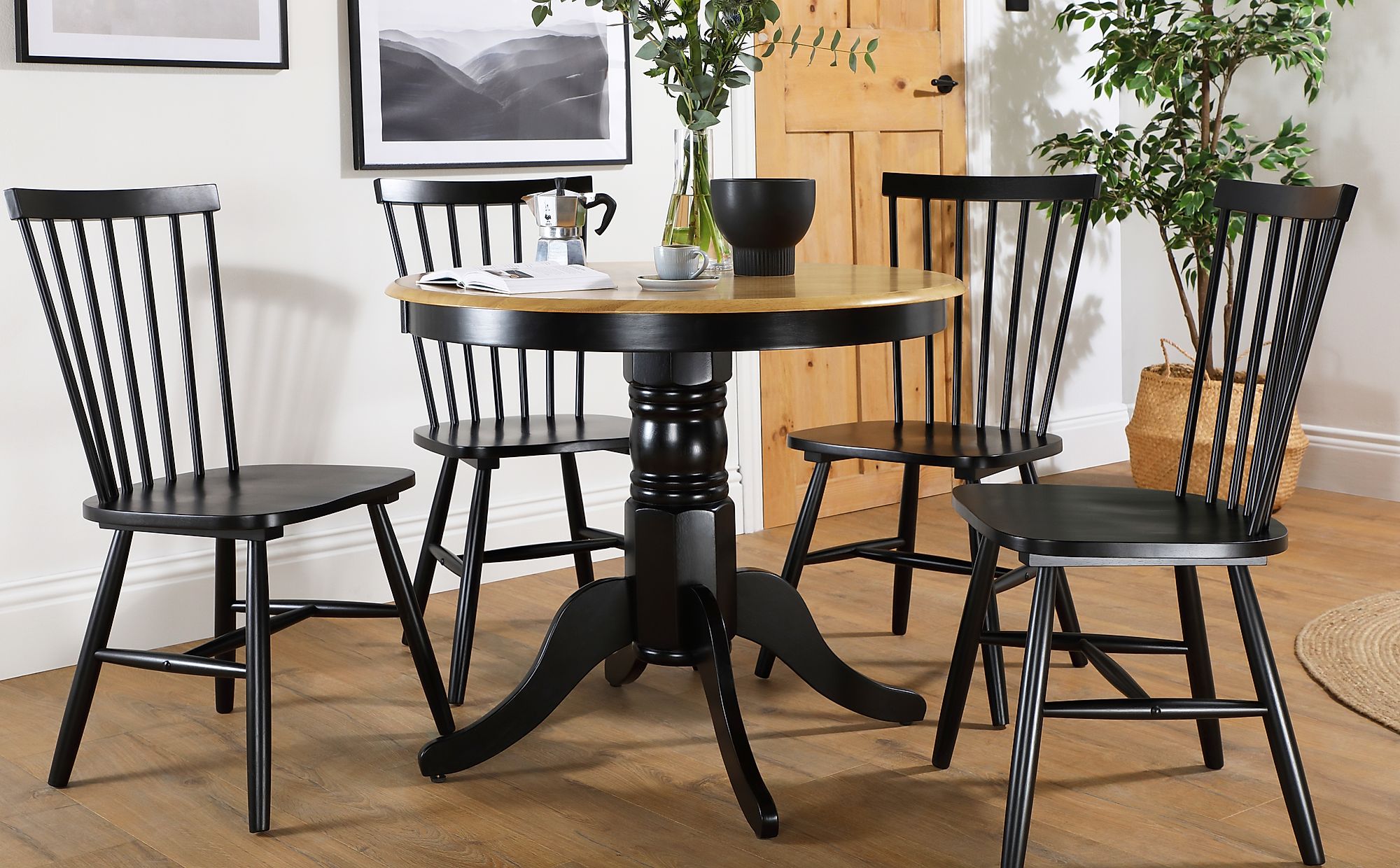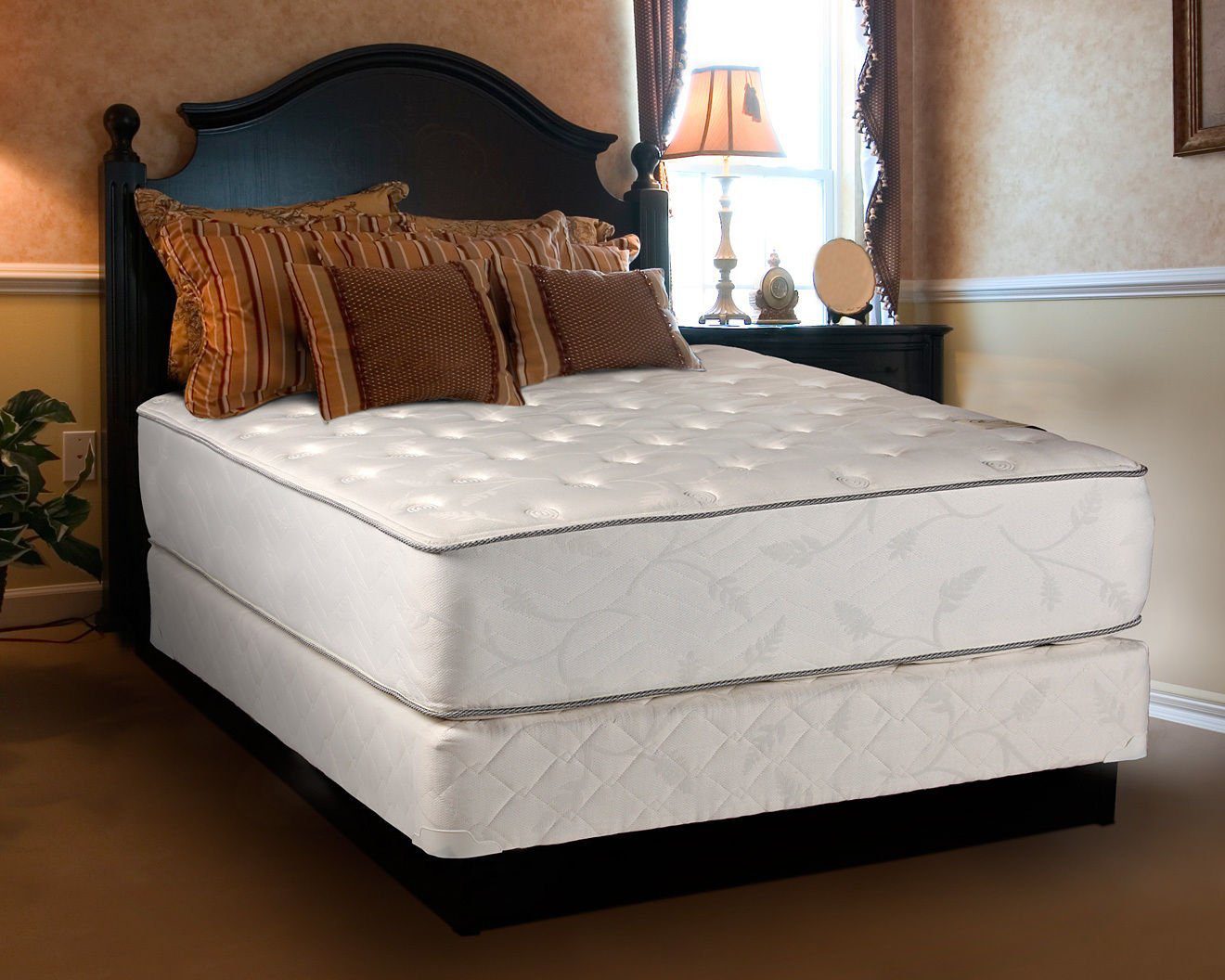Dealing with a clogged kitchen sink can be a frustrating and messy experience. Whether it's from an excessive amount of food scraps or a buildup of grease and soap residue, a clogged drain can disrupt your daily routine. Luckily, there are several methods you can try to unclog your kitchen sink drain and get your sink back in working order. One quick and easy solution is to use a plunger. Simply place the plunger over the drain and push and pull vigorously to create suction and dislodge the clog. If this method doesn't work, you can try using a mix of baking soda and vinegar to dissolve the clog. Pour half a cup of baking soda down the drain, followed by a cup of vinegar. Let it sit for about 15 minutes, then pour hot water down the drain to flush it out. If these methods don't work, you may need to remove the drain trap and manually remove the clog. This can be done with a plumber's snake or a bent wire hanger. Remember to wear gloves and use caution when handling the drain trap.How to Unclog a Kitchen Sink Drain
Over time, the pipes under your kitchen sink may become worn out or damaged, causing leaks and other problems. If you notice any signs of deterioration, it's important to replace them as soon as possible to avoid further damage. Here's how to replace your kitchen sink drain pipes in a few simple steps. First, turn off the water supply to your sink. Then, using a wrench, loosen the nuts connecting the pipes to the sink and drain. Remove the old pipes and replace them with new ones, making sure to secure them tightly with the nuts. Finally, turn the water supply back on and check for any leaks. If you're not confident in your plumbing skills, it's always best to hire a professional to replace your kitchen sink drain pipes.How to Replace Kitchen Sink Drain Pipes
Kitchen sink drain pipes can experience a variety of issues over time. Some of the most common problems include clogs, leaks, and corrosion. Clogs can be caused by an accumulation of food scraps, grease, and soap residue. Leaks can occur due to worn out or damaged pipes, while corrosion is often caused by exposure to harsh chemicals or high levels of acidity in the water. To prevent these problems, it's important to properly maintain your kitchen sink drain pipes. This includes regularly cleaning them to prevent buildup, using a drain strainer to catch food scraps, and avoiding harsh chemicals or acidic substances. If you do encounter any issues, it's best to address them as soon as possible to avoid further damage.Common Problems with Kitchen Sink Drain Pipes
Cleaning your kitchen sink drain pipes is an essential part of maintaining a healthy and functional plumbing system. Over time, debris and residue can build up in the pipes, leading to clogs and unpleasant odors. Here's how to clean your kitchen sink drain pipes in a few simple steps. Start by removing any visible debris from the drain using a pair of pliers or tweezers. Then, pour half a cup of baking soda down the drain, followed by a cup of white vinegar. Let the mixture sit for about 15 minutes, then pour hot water down the drain to flush it out. You can also use a drain brush or a plumber's snake to remove any stubborn buildup. Repeat this process every few months to keep your drain pipes clean and clog-free.How to Clean Kitchen Sink Drain Pipes
If you're remodeling your kitchen or simply need to replace your old drain pipes, you may need to install new ones. While this task may seem daunting, it can be done with a few basic tools and some patience. Here's how to install kitchen sink drain pipes in a few simple steps. First, assemble all the necessary parts, including the drain trap, tailpiece, and fittings. Then, connect the tailpiece to the strainer and attach the drain trap to the tailpiece. Finally, connect the other end of the drain trap to the main drain line. Make sure all connections are tight and secure to prevent leaks. If you're not confident in your plumbing skills, it's best to hire a professional to install your kitchen sink drain pipes.How to Install Kitchen Sink Drain Pipes
A leaking kitchen sink drain pipe can cause a variety of problems, including water damage, mold growth, and high water bills. If you notice any signs of a leak, it's important to address it as soon as possible to avoid further damage. Here's how to fix a leaking kitchen sink drain pipe in a few simple steps. Start by identifying the source of the leak. It could be from a loose connection, a cracked pipe, or a worn out gasket. Once you've identified the issue, you can tighten the connections, replace the damaged pipe, or install a new gasket. If the leak is coming from a hard-to-reach area or you're not confident in your plumbing skills, it's best to hire a professional to fix the problem.How to Fix Leaking Kitchen Sink Drain Pipes
A blocked kitchen sink drain can be a major inconvenience, but luckily, it can be easily cleared with a few simple steps. Here's how to clear a blocked kitchen sink drain in no time. Start by removing any visible debris from the drain using a pair of pliers or tweezers. Then, pour half a cup of baking soda down the drain, followed by a cup of white vinegar. Let the mixture sit for about 15 minutes, then pour hot water down the drain to flush it out. If the clog persists, you can use a plunger or a plumber's snake to dislodge it. If none of these methods work, it's best to call a professional plumber to clear the blockage.How to Clear Blocked Kitchen Sink Drain Pipes
Removing kitchen sink drain pipes may be necessary for various reasons, such as replacing them or accessing a clog. Here's how to remove kitchen sink drain pipes in a few simple steps. Start by turning off the water supply to your sink. Then, using a wrench, loosen the nuts connecting the pipes to the sink and drain. Once the nuts are removed, the pipes should come apart easily. You can then replace the pipes or clear any clogs. Remember to wear gloves and use caution when handling the drain trap.How to Remove Kitchen Sink Drain Pipes
If your kitchen sink drain pipes are damaged or worn out, you may be able to repair them instead of replacing them. Here's how to repair kitchen sink drain pipes in a few simple steps. Start by identifying the damaged area and cleaning it thoroughly. If there's a crack in the pipe, you can use epoxy or plumber's putty to seal it. If the pipe is corroded, you may need to replace it. Once the repairs are done, make sure to test for any leaks before using the sink again.How to Repair Kitchen Sink Drain Pipes
Prevention is key when it comes to maintaining your kitchen sink drain pipes. Here are a few tips to help prevent clogs and keep your pipes in good condition. First, use a drain strainer to catch food scraps and other debris before they go down the drain. Avoid pouring grease, oil, and other harsh chemicals down the drain, as they can cause buildup and corrosion. Regularly clean your drain pipes with a mixture of baking soda and vinegar to prevent clogs. And finally, if you do encounter a clog, address it as soon as possible to avoid further damage to your pipes.How to Prevent Clogs in Kitchen Sink Drain Pipes
The Importance of Proper Drain Pipes Under the Kitchen Sink

Preventing Clogs and Costly Repairs
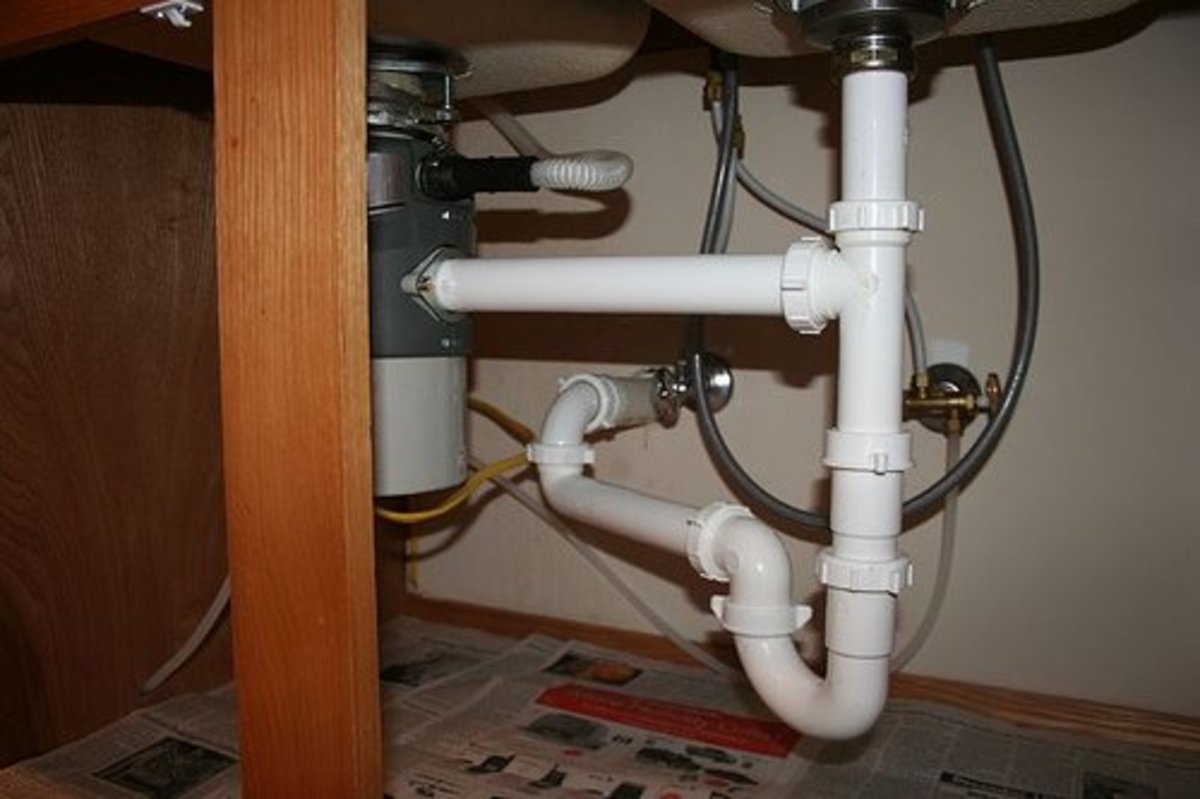 One of the most commonly used rooms in a house is the kitchen, making it essential to have a functional and well-maintained plumbing system. The
drain pipes under the kitchen sink
play a crucial role in keeping the kitchen running smoothly. These pipes are responsible for carrying wastewater away from the sink and into the main sewer line. However, without proper care and maintenance, these pipes can easily become clogged, causing inconvenience and potentially leading to costly repairs.
One of the most commonly used rooms in a house is the kitchen, making it essential to have a functional and well-maintained plumbing system. The
drain pipes under the kitchen sink
play a crucial role in keeping the kitchen running smoothly. These pipes are responsible for carrying wastewater away from the sink and into the main sewer line. However, without proper care and maintenance, these pipes can easily become clogged, causing inconvenience and potentially leading to costly repairs.
Choosing the Right Materials
 When it comes to
drain pipes under the kitchen sink
, it is important to choose materials that are durable and can withstand the constant flow of water and debris. Most modern homes use PVC or ABS plastic pipes, which are known for their strength and resistance to corrosion. These materials are also relatively easy to install and maintain, making them a popular choice for homeowners.
When it comes to
drain pipes under the kitchen sink
, it is important to choose materials that are durable and can withstand the constant flow of water and debris. Most modern homes use PVC or ABS plastic pipes, which are known for their strength and resistance to corrosion. These materials are also relatively easy to install and maintain, making them a popular choice for homeowners.
Proper Installation and Maintenance
 It is crucial to have the
drain pipes under the kitchen sink
properly installed by a professional plumber to ensure they function correctly. Improper installation can lead to leaks, clogs, and even structural damage to the surrounding areas. It is also important to regularly maintain these pipes by regularly flushing them with hot water and using a pipe cleaner to prevent any buildup of grease, food particles, or soap scum.
It is crucial to have the
drain pipes under the kitchen sink
properly installed by a professional plumber to ensure they function correctly. Improper installation can lead to leaks, clogs, and even structural damage to the surrounding areas. It is also important to regularly maintain these pipes by regularly flushing them with hot water and using a pipe cleaner to prevent any buildup of grease, food particles, or soap scum.
Preventing Unpleasant Odors
/how-to-install-a-sink-drain-2718789-hero-24e898006ed94c9593a2a268b57989a3.jpg) A common issue with
drain pipes under the kitchen sink
is the buildup of food particles and grease, which can lead to unpleasant odors. Regularly cleaning and maintaining these pipes can help prevent these odors from permeating your kitchen and home. Additionally, using a mixture of baking soda and vinegar can help break down any buildup and eliminate any unwanted smells.
A common issue with
drain pipes under the kitchen sink
is the buildup of food particles and grease, which can lead to unpleasant odors. Regularly cleaning and maintaining these pipes can help prevent these odors from permeating your kitchen and home. Additionally, using a mixture of baking soda and vinegar can help break down any buildup and eliminate any unwanted smells.
Conclusion
 Properly functioning
drain pipes under the kitchen sink
are essential for a functional and well-maintained kitchen. By choosing the right materials and having them installed and regularly maintained by a professional, homeowners can avoid costly repairs and prevent unpleasant odors in their kitchen. Remember to always prioritize the care and maintenance of your
drain pipes
to keep your kitchen running smoothly.
Properly functioning
drain pipes under the kitchen sink
are essential for a functional and well-maintained kitchen. By choosing the right materials and having them installed and regularly maintained by a professional, homeowners can avoid costly repairs and prevent unpleasant odors in their kitchen. Remember to always prioritize the care and maintenance of your
drain pipes
to keep your kitchen running smoothly.




:max_bytes(150000):strip_icc()/freshen-and-unclog-drain-with-baking-soda-1900466-22-bbf940b70afa4d5abef0c54da23b1d3f.jpg)






/how-to-unclog-a-kitchen-sink-2718799_sketch_FINAL-8c5caa805a69493ab22dfb537c72a1b7.png)





/how-to-install-a-sink-drain-2718789-hero-b5b99f72b5a24bb2ae8364e60539cece.jpg)



:max_bytes(150000):strip_icc()/how-to-install-a-sink-drain-2718789-hero-24e898006ed94c9593a2a268b57989a3.jpg)

